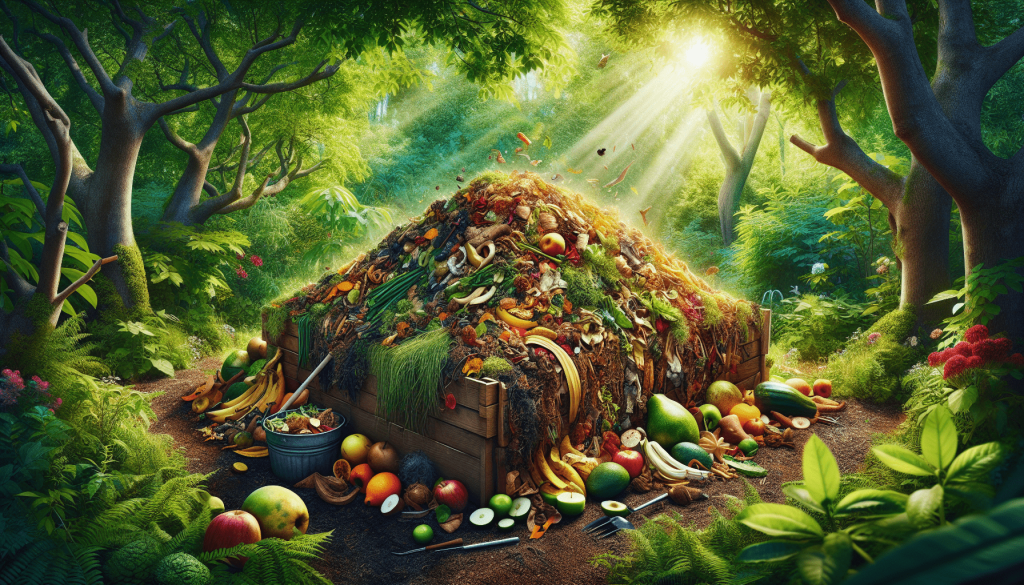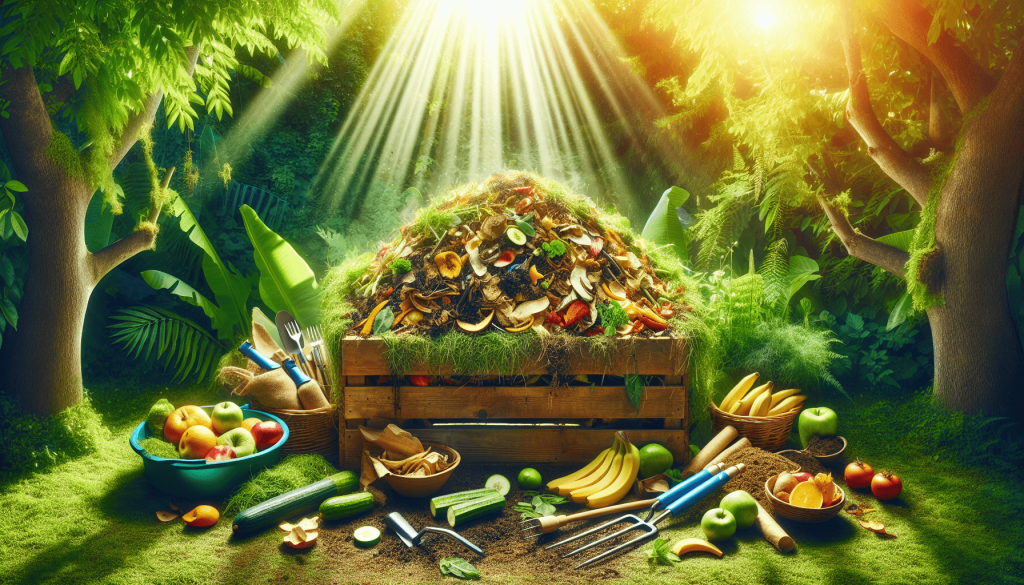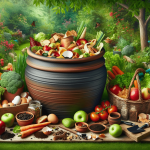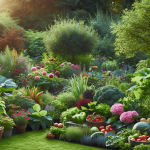This post may contain affiliate links. As an Amazon Associate, we may earn commissions from qualifying purchases.
Have you ever wondered how you can turn your kitchen scraps and yard waste into valuable nutrient-rich compost? If you have, you’re not alone, and there’s no better time than now to embark on a composting journey that will enlighten your gardening practices while doing wonders for the environment. Let’s walk through the best practices for maintaining a compost heap together, ensuring that you end up with rich, black gold that can fuel your garden’s growth.
What is Composting?
Composting is an ancient technique that involves the decomposition of organic material into a humus-like substance. This process is facilitated by microorganisms, worms, and insects that break down your items into nutrient-rich compost. It’s essentially nature’s way of recycling.
Why should you consider composting? The benefits are plenty! Not only does it drastically reduce the volume of waste you send to the landfill, but it also enhances your garden’s soil quality, improves plant health, and minimizes the need for chemical fertilizers. Plus, it’s incredibly satisfying to see waste transform into something so valuable.
The Ingredients of a Perfect Compost Heap
Composting requires a balance of green and brown materials to ensure efficient decomposition.
Green Materials
Green materials are your nitrogen-rich items. These include:
- Fruit scraps
- Vegetable waste
- Coffee grounds
- Fresh grass clippings
These materials provide the protein-rich elements and some moisture needed for your compost.
Brown Materials
Brown materials are carbon-rich and include:
- Dry leaves
- Straw
- Paper
- Cardboard
These provide the carbon needed for energy, helping to create a well-balanced compost. Be sure to shred larger pieces to speed up the breakdown.
The Balancing Act
An effective compost pile needs a good mix of both material types. A ratio of 3:1 (browns to greens) is often suggested, but don’t be afraid of experimenting as long as you consider the unique needs of your compost pile. Too much green waste can make your compost wet and smelly, while too much brown can slow down the decomposition process.

Setting Up Your Compost Heap
Creating the right environment is essential for a thriving compost heap. Let’s lay down the basics for a perfect setup.
Choosing the Right Spot
Find a discreet yet convenient location for your heap. You want easy access to it throughout the year, while also keeping it away from view if aesthetics is a concern. A spot with partial shade is ideal, as too much sun can dry out the compost, while too little can slow processes due to lack of heat.
Building the Heap
You can opt for a simple pile or use a compost bin to keep things contained. When starting your heap, consider a base layer of coarse materials like twigs to allow airflow. Then, alternate between green and brown layers, ensuring you start and finish with brown materials to minimize odors.
The Art of Piling
Loosely layer the compost materials to allow good aeration. This ensures that aerobic bacteria thrive, which keeps the decomposition process efficient and stench-free.
Maintaining Your Compost Heap
Keeping your compost heap in good condition requires some regular maintenance, but it’s far from laborious.
Aeration
Ensure your compost gets plenty of air. This might involve turning the heap every couple of weeks with a pitchfork or shovel. By aerating your pile, you introduce more oxygen, which keeps the aerobic bacteria and other organisms active and efficient.
Moisture Control
Moisture is crucial for a thriving compost pile. Your compost should be as damp as a wrung-out sponge. You don’t want it too dry, or decomposition will slow, or too wet, which can lead to unpleasant odors. Regularly check the moisture level, and add water or dry materials as needed.
Temperature Monitoring
A hot compost pile is an active compost pile. Decomposition generates heat, typically between 135-160°F. If your pile is not heating up, it may signal an imbalance. Check the mix of greens to browns, aerate, and adjust moisture levels accordingly.

Common Composting Challenges and Solutions
Composting might seem daunting initially, but most issues are easily rectified.
Unpleasant Odors
Foul smells typically stem from too many green materials or lack of air circulation. Check for the balance in your mix and turn the pile. Adding more brown materials can quickly remedy the situation.
Flies and Pests
If you’ve been noticing unwanted visitors, ensure you’re not adding meat, dairy, or overly large quantities of kitchen scraps. Also, make sure to cover fresh inputs with brown materials.
Slow Decomposition
If your compost heap seems inactive, check the temperature and ensure proper balance and moisture. Sometimes, adding more nitrogen-rich greens or giving it a good mix can jumpstart the process.
Benefits for Your Garden and the Environment
Beyond reducing waste, composting offers myriad benefits to both gardeners and the environment.
Enhanced Soil Quality
Your garden can say goodbye to synthetic soil enhancers. Compost improves the soil’s ability to retain moisture and provide nutrients, leading to healthier plants.
Eco-Friendly Waste Management
By composting, you redirect waste from landfills where it would otherwise emit methane, a potent greenhouse gas. Contributing less to this process positively impacts climate change mitigation efforts.
Cost Efficiency
With a regular compost supply, you’ll save money on fertilizers and soil conditioners. It’s a win-win for the environment and your wallet!
Advanced Composting Techniques
If you want to take your composting up a notch, consider these techniques.
Vermicomposting
This involves using worms, typically red wigglers, to speed up decomposition. Worms are incredibly efficient and can be an excellent choice for those with limited space.
Bokashi Composting
An anaerobic method using bran inoculated with microorganisms. It’s praised for its speed and the ability to handle a wide range of kitchen waste, including meat and dairy.
Hot Composting
For faster results, maintain your compost at higher temperatures. This involves more frequent turning, moisture control, and active monitoring but yields quicker, high-quality compost.
Mistakes to Avoid
Even seasoned composters can slip up. Here are a few things to watch out for:
-
Ignoring Moisture Levels: As simple as it sounds, forgetting to check moisture can derail your entire process. Always aim for that slightly damp texture.
-
Overloading with Green Materials: It’s easy to get greens-heavy, leading to odors and imbalance. Remember the 3:1 ratio, and stick to it robustly.
-
Neglecting Aeration: Skipping the regular turning, especially when the pile smells or there’s no heat, can set you back significantly. Prioritize airflow for a thriving compost heap.
A Satisfying Journey Ahead
Composting is more than just a practical waste management practice; it’s a deeply rewarding venture that connects you to the lifecycle of your garden. As you refine your approach, don’t hesitate to be inquisitive and experimental. This process is as much about learning as it is about nurturing your slice of the planet.
Let’s joyfully maintain this alchemy of nature, transforming what might be seen as ‘waste’ into a nourishing boon for your garden and our shared environment. Trust in your green intuition, and soon enough, you’ll be turning every scrap into one more step toward a more sustainable lifestyle. Remember, the earth benefits as much as your garden does with every shovelful you tend to.








